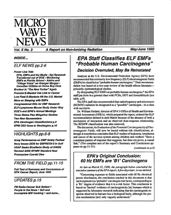News & Comment
DNA Breaks, Oxidative Stress and
Gene Expression Are on the Agenda
Tuesday, September 17, 2019
Last updated October 22, 2019
Fabricating History on the New York Times Science Desk

Monday, July 22, 2019
Last updated July 13, 2021
True Increases or Artifacts?

Tuesday, June 11, 2019
A Deep Dive into the Swedish Cancer Registry

Wednesday, February 20, 2019
Last updated March 30, 2019
Why Were Older People Excluded?
No One Wants To Talk About It

Wednesday, January 2, 2019
Last updated January 10, 2019

